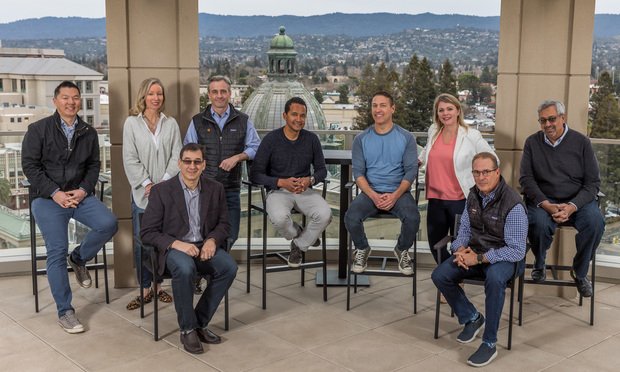During the red-hot years of the mid-2000s, many commercial real estate developers opted to bring activities in-house. It was common to see development companies offering everything from leasing and land acquisitions to both vertical and horizontal development and even design, all under one umbrella.
Then the Great Recession came, followed by the global financial meltdown. Four years after the collapse, the economy continues to struggle toward an ambivalent recovery. But economics changed how developers operate. What once might have been a start-to-finish project under one roof is likely to be completed by partners.
Alan B. Wynne, a member of the firm of Epstein Becker & Green PC, points out that, during the financial meltdown, developers that wanted to survive were forced to scale back operations to the bone. This meant cutting back on departments that had little to do with project development. As a result, "development companies have returned to their roots and core competencies," comments Wynne, who operates out of the company's Atlanta office. "More than ever, developers are partnering with others who provide complementary services, rather than trying to do everything in-house."
These partnerships can take on many forms, though the most common tend to be partnerships between equity partners or landowners and developers.
On the equity side, the economic downturn and more stringent lending standards have required more up-front capital to get development deals accomplished. "The recession was punitive to a number of national development entities," observes Scottsdale, AZ-based Kurt Rosene, senior vice president of the Alter Group. It goes without saying that these days, developers aren't finding lenders throwing ready cash at them, except, maybe in the multifamily housing sector or, in some cases, industrial. "Each development these days needs to stand on its own, and this has caused developers to bring in various partners with stronger balance sheets and/or equity. Because of that, developers are being forced to seek out joint venture partners more than they had in the past."
In addition to equity partners, companies such as Alter (headquartered in Chicago) and KDC (based in Dallas) have regularly struck development deals with landowners. One example of this is KDC's Corporate Employment District, a 160-acre office and industrial development within Craig Ranch, located in McKinney, TX, approximately 30 miles north of Downtown Dallas. While master developer David Craig is taking on the residential, retail and amenities components of the 2,200-acre mixed-use project, KDC is building up an employment center through vertical development. "Land owners have strong positions in a viable environment with a potential of capturing office or industrial build-to-suit projects," comments KDC senior vice president and partner Bill Guthrey. "Through JVs, we're able to team up with another developer/owner of relevant real estate and bring our finance, development and management expertise to the equation."
Meanwhile, further west, in Scottsdale, AZ, Alter entered into a JV agreement some years ago with the Salt River Pima-Maricopa Indian Community to develop the 187-acre, $400-million Riverwalk Arizona, a mixed-use project featuring planned office, hotel and retail development. JVs are nothing new for Alter. But as the economy takes its time perking up, "it made more sense to align ourselves with land owners who didn't need to sell their land right away but wanted to develop and maybe didn't have the development experience that we have," Rosene comments.
Guthrey, Rosene and other developers acknowledge that it makes more sense to partner with land owners in an attempt to build value, rather than spending financial resources on buying land, and carrying that undeveloped land on their books.
But recent years have seen other kinds of project JVs that go beyond land/developer partnerships. Anyone following student housing development, for example, understands that universities and colleges are opting more to partner with outside companies that can handle everything from building student housing to managing it. This is the case, especially, as student enrollment continues increasing, meaning new housing needs to be developed and older and obsolete stock needs to be renovated.
Moving off campus and into senior housing, PinPoint Commercial LP in Houston and Atlanta-based Thrive Senior Living LLC joined forces to develop a series of assisted living/ memory care facilities throughout the Southeast and Texas. PinPoint principal Charles Turner says Thrive provides the operations and management muscle to the partnership, while PinPoint kicks in the development, construction and financial know-how.
"We're educated enough to know what a good operator is, but frankly, what we're better at is bringing dollars and development expertise to a project," he remarks. "Our partner has selfdeveloped things in the past but is even better at operations." By throwing in together, he goes on to say, PinPont and Thrive have been able to grow more effectively and identify other projects and geographic areas in which to develop.
The same scenario holds true for San Antonio-based Lynd Co., best known for its multifamily and student housing developments. While Lynd goes it alone, it also likes to work with partners. For instance, Lynd recently announced a JV with LNR Property LLC to develop EnV Brickell, a 35-story luxury multifamily development that will top the retail Mary Brickell Village, which, in turn, boasts a Publix market and other retailers. The project, which will kick off in early 2014, involves an equity partner (BlackRock Realty Advisors) and a construction lender (Wells Fargo NA).
Lynd and LNR teamed to acquire development rights that once belonged to Skyline Equities Realty; the latter had planned to build condominiums atop the retail component before the recession hit and Skyline ran into financial difficulties. "This is a dream come true for a multifamily developer," comments Lynd Co. chief executive officer Michael Lynd. "This is a welllocated site, and there are all kinds of amenities there already for residents."
Lynd points out one important advantage to JVs: namely, the ability to participate in a project that might have been impossible if a developer went into it alone. EnV Brickell is such a project, he says. More generally, "maybe a developer controls a site that's perfect for a multifamily development but doesn't have the expertise and doesn't want to sell the site," Lynd says. "So it'll partner."
Combining core competencies seems to be a major motivation when it comes to developing partnerships, as well as the realization that in today's limited-resource world, doing it all isn't necessarily the key to success. "Typically each partner has a specific strength or focus, and it works together," Wynne says. "Perhaps someone doesn't have the necessary financing, but has land, whereas another partner might be skilled in operations."
Daniel Bernstein, chief investment officer with Philadelphiabased Campus Apartments Inc., points out that, when it comes to student housing, expertise can also end up being a factor, sometimes more so than financial issues. "Even if a university has the debt capacity or funding for a project, it might bring a developer on board to assist in designing and building a project," he comments. This means the university can put that debt capacity or funding into an academic pursuit, rather than in a building.
There is also a stronger big-picture focus when it comes to JV projects. "Developers used to developing on their own get into a niche and a narrow viewpoint," Wynne explains. "But a JV provides a larger vantage point to see if there is a better way to do things. It facilitates a thought process that may not be evident to a single company acting on it own."
For Campus Apartments, such JVs provide the opportunity to have a hand in developing and managing some pretty nifty projects as well as to work with some great partners. "Some of our projects involve shaping the entire landscape of a campus," Bernstein says. At Shippensburg University of Pennsylvania, for example, Campus Apartments is building a portfolio of 2,700 new beds in a three-phase project.
But all the positive core competencies and opportunities by themselves don't guarantee successful partnerships. Developers acknowledge that finding, creating and maintaining JVs is difficult. For example, Guthrey says sometimes partners' visions and expectations might not be the same, especially when it comes to issues such as product type or neighborhood control. "There definitely needs to be a meeting of the minds in terms of each party's expectations," he adds.
Rosene agrees, adding that in most situations, partners will come to the table with different backgrounds. "The Alter Group is a privately held business," Rosene points out. "If you partner with a REIT or publicly held company, you're suddenly working with a company beholden to stockholders that might have a different vision."
Such ventures also require a clear understanding of each partners' contribution. "I'm close to the guys in Atlanta on a personal level; I'm as much in their business as much as they're in mine," says Turner in his discussion about the PinPoint/Thrive partnership. "But if you don't have that relationship, someone developing this just as a third-party operator, it would create a tension in that you never really know where one group's responsibilities begin and the other ends."
These responsibilities can also involve financial issues. Wynne notes that developments requiring loans also require an understanding of which partner will guarantee the loan.
Even more important is an exit strategy. "As commercial real estate rebounds and prices stabilize and even increase, more partners will be faced with how, and when, to sell," Wynne says. "There has to be some framework and the flexibility to exit the partnership."
In addition to partnering with universities on development and management activities, Bernstein also embraces public/private partnerships, noting that PPPs "have become more accepted. Part of this is based on the economy. Universities are looking for ways to leverage developer expertise in design, development and construction." Furthermore, as more developers and managers get into the sector and prove they're capable of handling what needs to be done, "you're seeing these types of partnerships more widely accepted."
And when it comes to these partnerships, such as those involved on the student housing end, Bernstein says the process can be long and requires a great deal of patience. Consensusbuilding is important in such situations, he adds, especially since stakeholder goals for a particular project may not always be in alignment. "To deliver everything a university wants for a project in a manner that can be financed and that everyone agrees with can be a challenging endeavor," Bernstein says.
Because of the challenges inherent in development partnerships, many of the developers compare these ventures to marriage, complete with the effort necessary to meet with partners and to determine that everyone is on the same page. Due diligence is a courtship of sorts to ensure that the fit and goals are the same. But these ventures go beyond a marriage when it comes to the agreements; Lynd says there were many moving parts when it came to the Brickell project including air rights, funding, who would develop, who would own and so on. And Rosene points out that the contracts and legalese involved in finalizing such agreements can be extremely sophisticated and complex.
Even with all the hassle involved and a rebounding economy, developers will likely pursue JVs. "Most companies have downsized to their core," Wynne points out. "It would be hard for them to ramp up areas such as leasing or property management from scratch. It makes sense for them to stick with JVs for a while." Rosene agrees, pointing out that as long as liquidity and capital continue to be an issue—and they will—JVs aren't going away any time soon.
Guthrey says KDC will continue its efforts toward JVs, even with an increasingly positive real estate cycle. "It's time consuming and we're sensitive as to where we're putting forth our efforts," he remarks, adding that a great deal of effort is also put into ensuring the value is brought to all parties involved. "But if we're heading into a good real estate cycle, and I think we are, we want to make sure we're spending the time and resources in the right manner to establish opportunities for ourselves and our JV partners."
© Touchpoint Markets, All Rights Reserved. Request academic re-use from www.copyright.com. All other uses, submit a request to [email protected]. For more inforrmation visit Asset & Logo Licensing.






